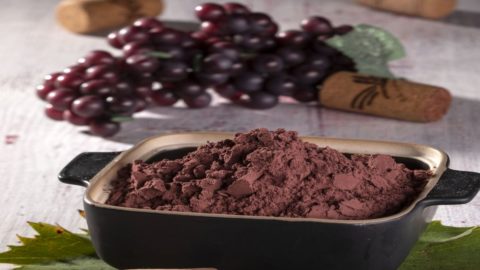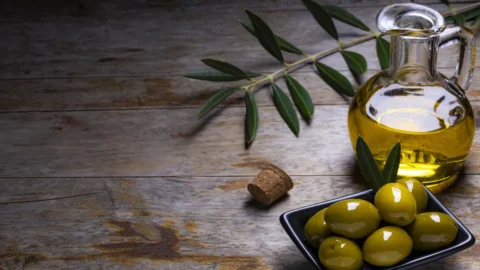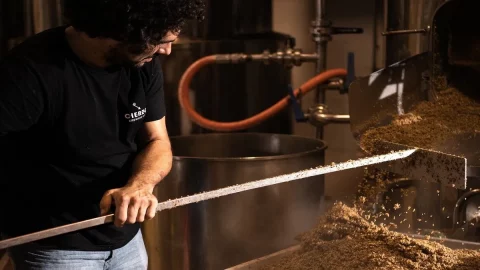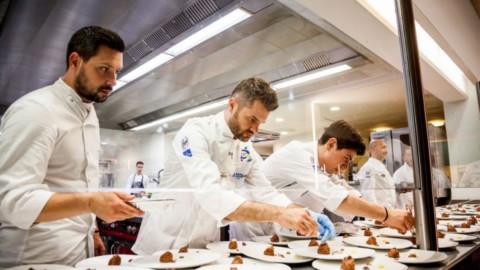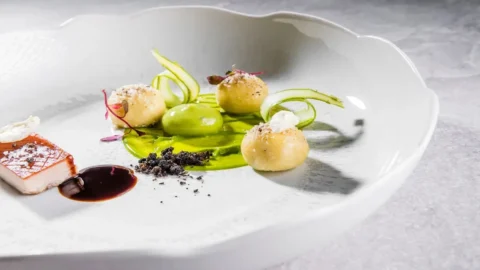A new ingredient arrives in the kitchen to the delight of the chefs. And the flavors and aromas of Sangiovese land on the plate, prince of the vines, which brings great wines such as Chianti Classico and Brunello into the glass. It is the pomace powder capable of ennobling recipes and culinary preparations thanks to its typical scents of grapes and its high nutritional content of fibers (50%), proteins (10%), mineral salts, in particular iron (18 mg/ 100g), as well as phenolic compounds such as anthocyanins.
The result of a long and accurate agro-scientific research work in collaboration with the Catholic University of the Sacred Heart of Piacenza to identify new ecological solutions in the management of the pomace at the end of the winemaking process, the powder is obtained through a drying process in low temperature which will preserve the grape's nutrients intact.
It was born in Casa Emma - a historic Chianti Classico company, purchased by Fiorella Lepri of the Bucalossi family at the end of the sixties from the Florentine noblewoman Emma Bizzarri whose name it retains - where experimentation and innovation are the order of the day as happens among the rows of lives when dozens of geese run freely fertilizing the soil and helping to obtain Chianti Classico Vignalparco. Or with the production of alcohol-free red wine, suitable for those who are intolerant to alcohol or for those who intend to drive after a drink without fear, the "0% Alcohol" Sagohe.
And the pomace powder can become the protagonist of an entire menu, as Sara Papa, chef, television face and author of numerous and great cooking bestsellers, has experienced in the field, combining Tuscan tradition with Mediterranean flavors with the help of "magic" red powder. From bread to breadsticks, from pasta to meat to dessert.
So the bread is made with pomace powder and almonds and the tagliolini arrive on the plate after having been worked with pomace powder and are served with datterini tomatoes confit on cream of peas and green orange powder. While the famous "peposo" is cooked in Chianti Classico Riserva and presented on a cream of potatoes, caramelized Tropea onion and wild fennel flowers. To top it off with the Sangiovese wine stracciatella that has a crunchy heart – ca va sans dire! – to pomace powder. «When we think of grapes, the first thought goes to wine. In reality, the peel, especially the dark one, contains a concentration of very important nutritional properties and it would be a real shame to waste such a precious food – observes Sara Papa. The pomace powder was an extraordinary discovery, with an incredible versatility in cooked but also raw.
Not only grappa, the "made in Italy" spirit par excellence, therefore comes from the processing of pomace as we usually know. Or the cheese aged in the pomace that the Tuscans offer as a supreme delicacy in snacks “Extremely versatile, the pomace powder lends itself to countless uses – comments Marco Salvadori, enologist of Casa Emma -.
It can be used in pasta and dough with any type of flour, whether wholemeal, multigrain or 00; in the confectionery and pastry industry: biscuits, rusks, shortcrust pastry, chocolate and ice cream; in catering to enrich sauces, stews and other preparations; in herbal teas, but also as a thickener and in beauty products, such as skin creams, and finally in supplements and energy bars.»
EMMA HOUSE
SP Castellina in Chianti, 3 50021 Barberino Tavarnelle (FI)
055 807 22 39 www.casaemma.com info@casaemma

